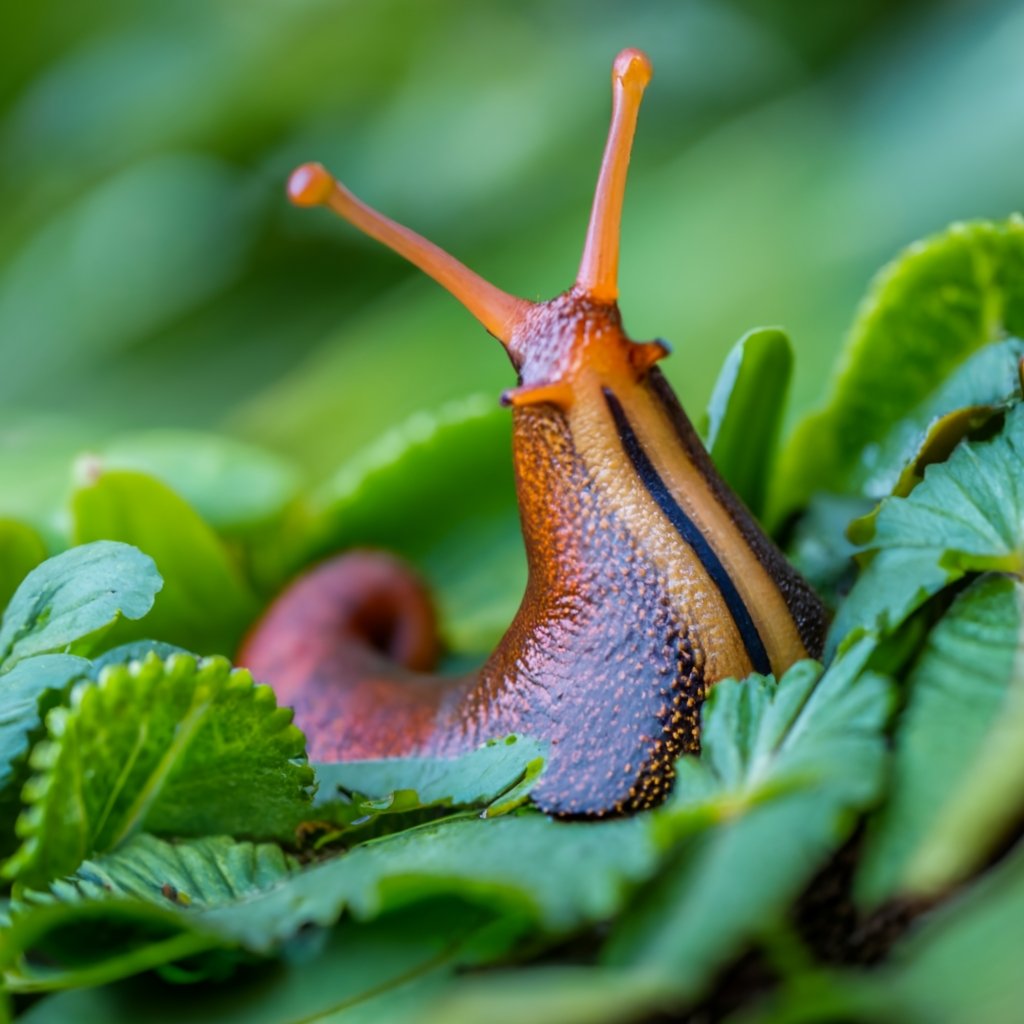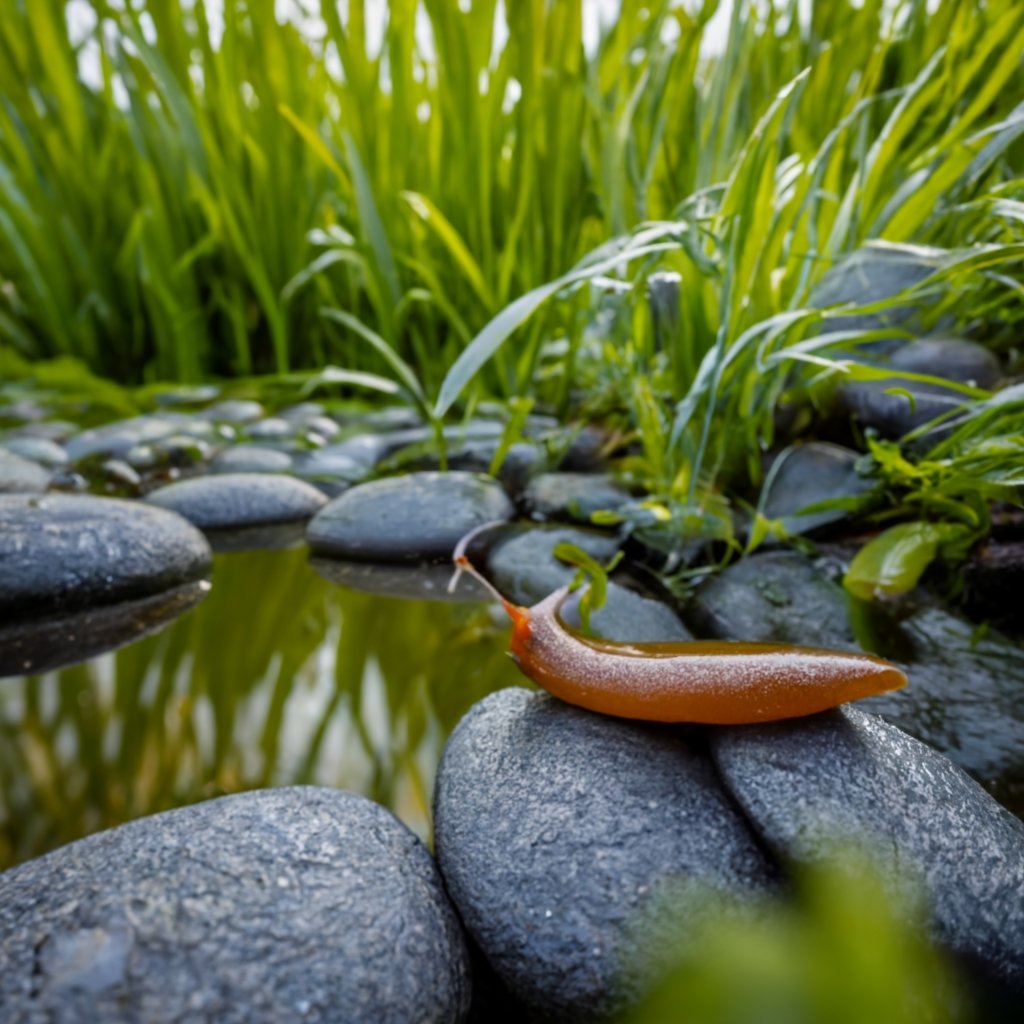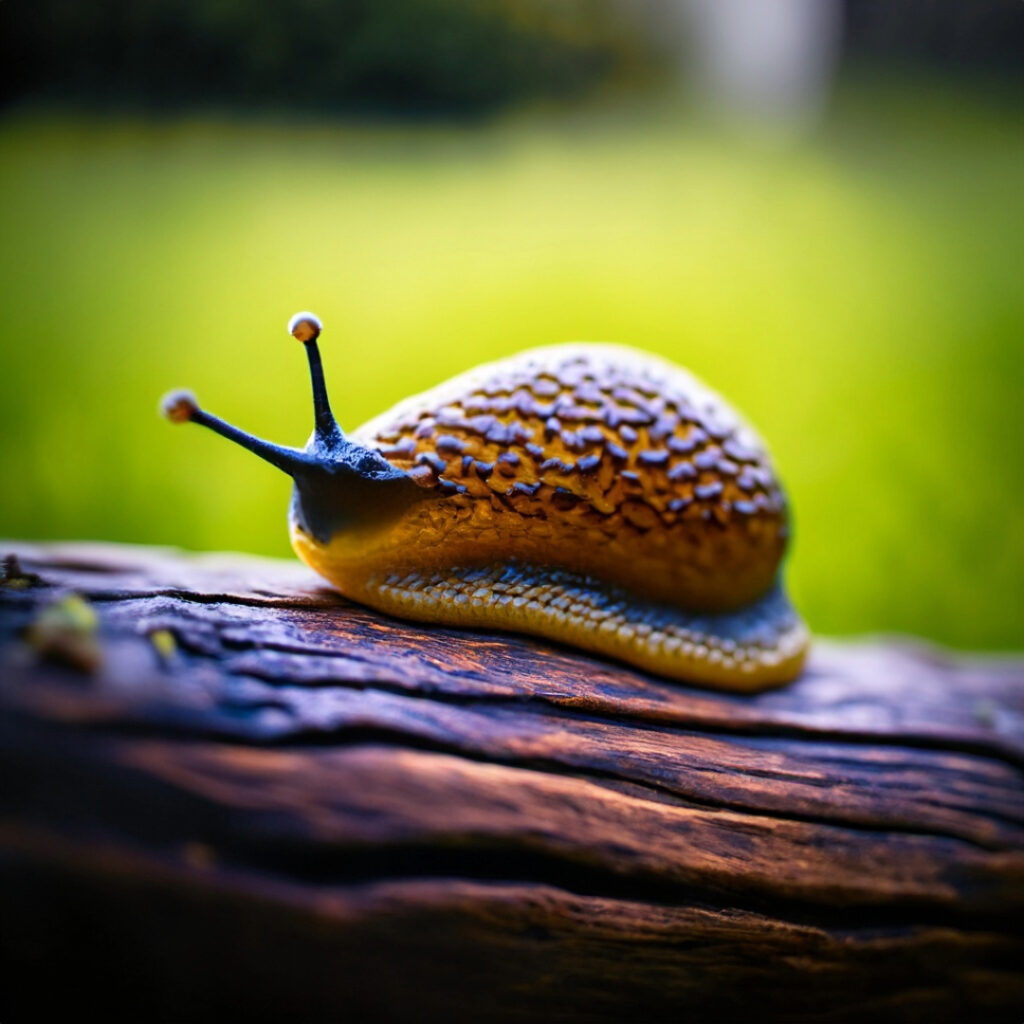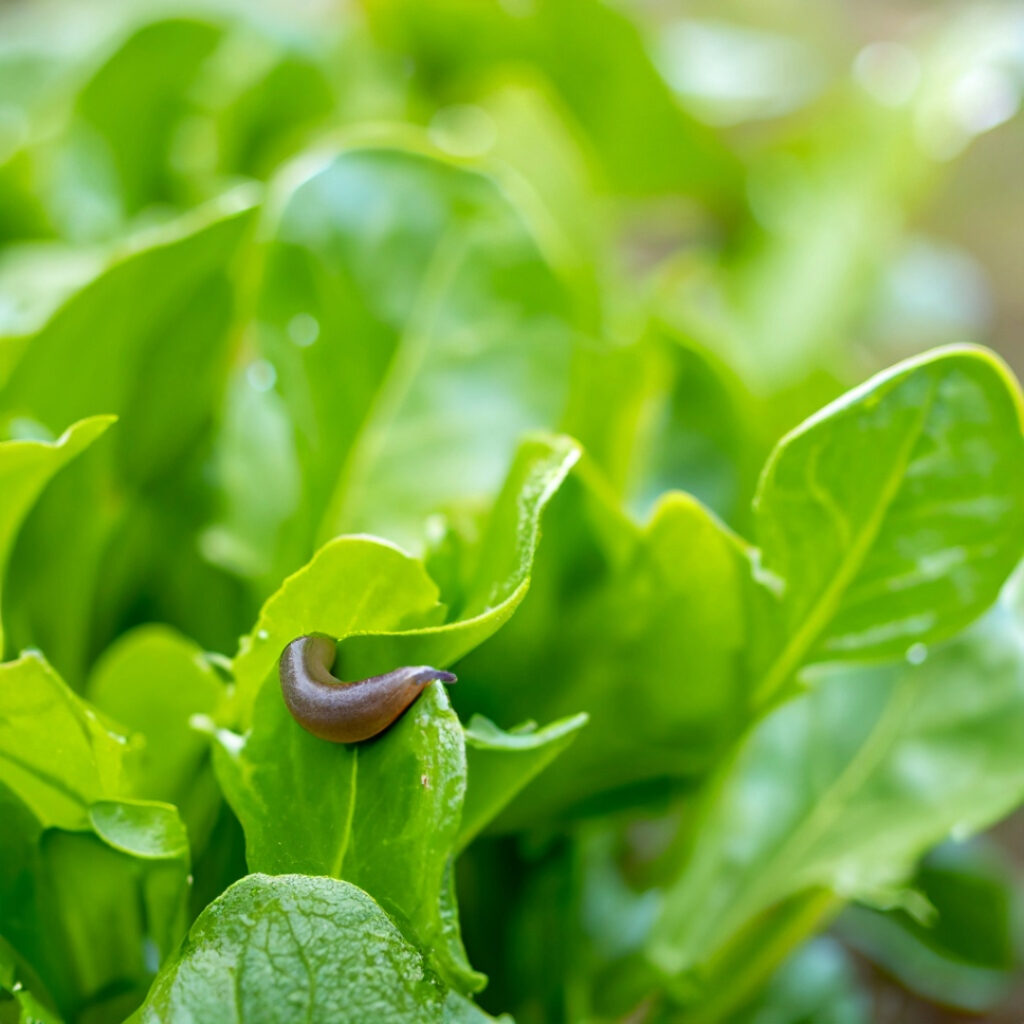Welcome to the fascinating world of slugs, a topic that might intrigue not only the avid gardeners but also those nurturing a newfound green thumb. In this section, we delve into an insightful overview of slugs and the common places they inhabit.
Slugs thrive in damp environments, often hiding under leaves, rocks, and debris during the day, emerging at night to feed on plants. Implementing natural barriers such as copper tape, encouraging predators like birds and hedgehogs, and utilizing organic repellents can effectively control slug infestation. By adopting these sustainable methods, gardeners can protect their plants and promote a harmonious ecosystem in their gardens

Understanding Slugs
Slugs belong to the mollusk family, sharing a close kinship with snails. These creatures are known for their slimy bodies and lack of a prominent shell, a distinguishing feature that separates them from their snail cousins. Slugs are highly adaptable, making a variety of environments their home.
Common Slug Habitats
Slugs prefer cool, damp surroundings, often found luxuriating in gardens, under rocks, or amidst the foliage. They are particularly fond of areas with abundant plant life, where they can find both shelter and a generous supply of food. Here are a few common habitats of slugs:
- Gardens and flowerbeds
- Under stones and logs
- Within compost heaps
- Moist soil areas
🐌 Slug Solution: To prevent slugs from making a home in your garden, ensure to remove debris and maintain a clean, well-tended space. 🐌
Where Do Slugs Come From?
Embarking on a journey to understand the life cycle of slugs can be a fascinating endeavor, especially for those with a keen interest in the natural world. Let’s delve deeper into the origins and common habitats of these intriguing creatures.
Origin and Life Cycle of Slugs
Slugs, the shell-less relatives of snails, have a life cycle that is both fascinating and complex. Their journey begins as tiny eggs, often laid in clusters in damp soil or under leaves. These eggs hatch into juvenile slugs, which gradually grow into adults over a period of several months. The adult slugs then mate, laying eggs to continue the cycle, thus maintaining a natural balance in the ecosystem.
Common Habitats and Hiding Places

Slugs are creatures of the night, venturing out to feed and explore when the temperatures are cooler. During the day, they seek refuge in damp, shaded areas to avoid the harsh sunlight. Here are some common habitats and hiding places where you might encounter slugs:
- Moist soil areas: A favorite for laying eggs and finding nourishment.
- Under stones and logs: Ideal hiding spots offering coolness and protection.
- Within compost heaps: A rich source of food and moisture.
- Gardens and flowerbeds: Areas with abundant plant life providing shelter and sustenance.
🐌 Slug Solution: To deter slugs from your garden, consider installing copper barriers around your plants, as slugs avoid crossing copper surfaces. 🐌
Understanding Slug Behavior and Activity Patterns
Slugs are fascinating creatures with nocturnal habits that often raise many questions due to their unique lifestyle. In this section, we delve deep into understanding their behavior and activity patterns, answering some of the most common questions about slugs.
Nocturnal Habits and Feeding Patterns
Slugs are primarily active during the night, venturing out to feed on a variety of plants. Their preferred meals include leaves, flowers, and fruits, which they locate using their keen sense of smell. To deter slugs from your garden, consider implementing barriers such as crushed eggshells or copper tape, which are known to be effective deterrents.
Frequently Asked Questions About Slugs

Slugs often raise many questions due to their unique lifestyle. Here, we answer some of the most common questions about slugs:
- What attracts slugs to gardens? Slugs are attracted to gardens with damp, shaded areas and an abundance of leafy plants, compost, or mulch where they can find food and shelter.
- How can one naturally deter slugs? Natural deterrents include using barriers like copper tape or crushed eggshells, encouraging natural predators, and avoiding watering the garden in the evening to reduce damp conditions.
- What is the lifespan of a slug? The average lifespan of a slug is about one to two years, although this can vary depending on the species and environmental conditions.
- Do slugs have any natural predators? Yes, slugs have several natural predators, including birds, frogs, toads, hedgehogs, and some insects like beetles.
- What role do slugs play in the ecosystem? Slugs play a vital role in the ecosystem by decomposing organic matter, helping to recycle nutrients and enrich the soil.
- How do slugs reproduce? Slugs are hermaphrodites, meaning they have both male and female reproductive organs. They can reproduce both by self-fertilization and mating with another slug.
- What are some interesting facts about slugs? Slugs have a highly developed sense of smell, they can stretch to 20 times their normal length, and they have thousands of tiny teeth arranged in rows on their radula (a tongue-like organ).
🐌 Slug Solution: To prevent slug infestation, consider planting slug-resistant plants like lavender, rosemary, or sage in your garden. 🐌
Preventing and Controlling Slug Infestation
In the journey towards a slug-free garden, adopting natural remedies and strategies can be a game-changer. Let’s explore some effective methods to prevent and control slug infestations without harming the environment.
Natural Remedies and Strategies to Prevent Slug Infestation
Embracing natural remedies not only keeps your garden slug-free but also ensures the well-being of other beneficial organisms. Here are some strategies you might consider:
- Barriers and Traps: Utilize barriers like crushed eggshells or copper tape to deter slugs. Traps using beer or yeast solutions can also be effective.
- Beneficial Predators: Encourage natural predators like birds and beetles in your garden to keep the slug population in check.
- Plant Selection: Choose plants that are less attractive to slugs, such as those with strong scents or hairy leaves.
Tips and Tricks for Effective Slug Control
Here are some proven tips and tricks that can help you control slug infestation effectively:
- Regular Garden Maintenance: Keeping the garden clean and free of debris reduces hiding spots for slugs.
- Watering Schedule: Water your plants early in the morning to reduce the damp conditions that slugs prefer.
- Organic Mulches: Use organic mulches that are less attractive to slugs, such as straw or bark mulch.
- Hand-Picking: As a last resort, hand-picking slugs during their active hours can help control their population.
🐌 Slug Solution: A sprinkle of coffee grounds around your plants can act as a natural deterrent for slugs, giving your plants a fighting chance to thrive! 🐌
Effects of Slug Infestation and How to Mitigate Them

Slugs can be quite a nuisance in the garden, leaving a trail of destruction that affects the health and beauty of your plants. In this section, we will guide you through identifying the signs of slug damage and offer strategies to protect your beloved garden spaces from these pesky invaders.
Identifying Signs of Slug Damage
Recognizing the signs of slug damage early on can be a game-changer in protecting your garden. Here are some common indicators:
- Holes in leaves, especially in the leaf margins
- Slimy trails visible on the soil or on the leaves
- Young seedlings appearing to be ‘sawn off’ at the base
- Chewed flower blossoms and fruits
🐌 Slug Solution: Setting up a night patrol with a flashlight can help you catch slugs in the act and identify affected areas. 🐌
Strategies to Protect Plants and Garden Areas from Slugs
Once you’ve identified the affected areas, it’s time to take action. Here are some strategies to consider:
- Encourage natural predators like birds and frogs in your garden
- Use barriers such as copper tape or crushed eggshells around plant bases
- Apply organic slug pellets that are safe for wildlife
- Implement a regular hand-picking routine, especially after rain
🐌 Slug Solution: Planting slug-resistant plants like ferns and geraniums can be a proactive approach to preventing slug infestation.
Conclusion
In our journey through understanding slugs and their impact on our gardens, we’ve uncovered their habits, habitats, and the signs of an infestation. More importantly, we’ve explored natural and sustainable methods to control these pests without harming our environment.
Recap of Key Points
- Identifying signs of slug damage early can save your garden
- Implementing natural barriers and encouraging predators are effective strategies
- Understanding slug behavior helps in devising targeted control methods
🐌 Slug Solution: Remember, a garden in harmony with nature is not only beautiful but also resilient. Let’s nurture it with kindness and respect. 🐌
As we wrap up, we encourage you to embrace these sustainable practices in your gardening journey. Together, we can foster gardens that are not only beautiful but also harmonious with the natural world.
